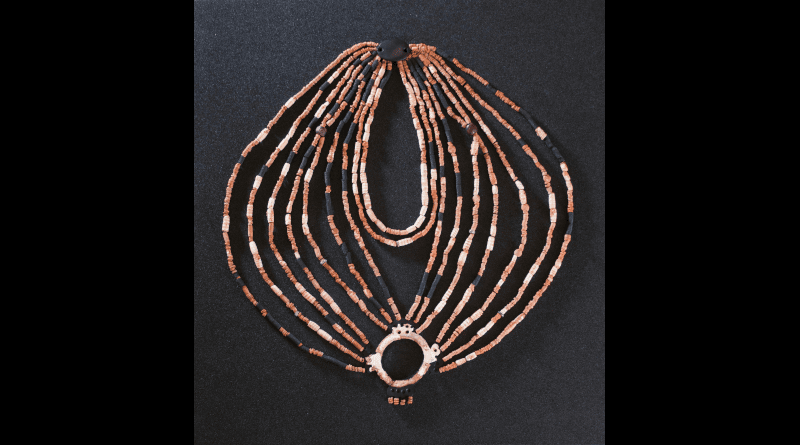9,000-Year-Old Necklace Handed Over To Museum In Petra
An international research team led by Hans Georg K. Gebel, Christoph Purschwitz, and Marion Benz at Freie Universität Berlin evaluated and reconstructed the finds from a 9000-year-old grave.
During excavations in 2018, the archaeologists found the richly decorated grave of an eight- to ten-year-old child in Ba`ja in the south of what is now Jordan. In the grave, they found a necklace consisting of more than 2580 beads.Hala Alarashi from the University of Nice and Alice Costes and Andrea Fischer from the State Academy of Fine Arts Stuttgart conserved and reconstructed the necklace. In October, it was handed over to the Museum of Petra, Jordan.
Project manager Hans Georg K. Gebel said it was the first time researchers were able to do an authentic reconstruction of such old, elaborately manufactured jewelry. The conservation and reconstruction work was carried out as part of the CARE (Cultural Heritage, Archaeological Research, Restoration and Education) project, a subproject of the “Household and Death in Ba`ja” project funded by the German Research Foundation (DFG).
CARE is a collaboration between Freie Universität Berlin, the Department of Antiquities Amman, Yarmouk University in Irbid, the State Academy of Fine Arts in Stuttgart, CEPAM in Nice, the Natural Sciences Department of the German Archaeological Institute in Berlin (Deutsches Archäologisches Institut Berlin), and thePetra Development & Tourism Region Authority, Wadi Musa. It was funded by the DFG, the Franz-und-Eva-Rutzen-Stiftung foundation, and ex oriente e.V.
Marion Benz, who coordinated the CARE project, pointed out that the grave has great significance in the field of archaeology, as it provided the researchers with additional knowledge about the Neolithic population. Besides that, it is of interest to the local population, who identifies with the cultural heritage of the region. All the elements of the elaborate tomb were recovered from the site in 2019 and reconstructed in October in the Petra Museum by the Jordanian cooperation partners Hussein al-Sababha and Musa Serbil from Yarmouk University. The research team was allowed to borrow all the beads on the necklace for scientific purposes. According to Hans Georg K. Gebel that was a great vote of confidence. It was only possible thanks to their good relations with the Department of Antiquities in Amman over the past decades. The restored and reconstructed necklace and grave have been on display in the new Petra Museum in Jordan since the beginning of October.
The CARE subproject is now completed. A film by the filmmaker Barbara Puskás on behalf of ARTE and ORFIII about the importance of this burial and the jewelry is to be broadcast in April 2022. The research on Ba`ja will be continued. According to the archaeologists, our ideas about the Neolithic populations in the Middle East need to be reconsidered based on the discoveries made over the past three years. The high technological standards, the funeral rituals, and the social organization in these early permanent large settlements in the south of the Levant testify to extremely complex, widely networking communities.

